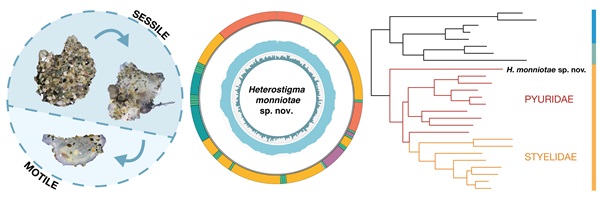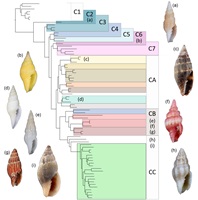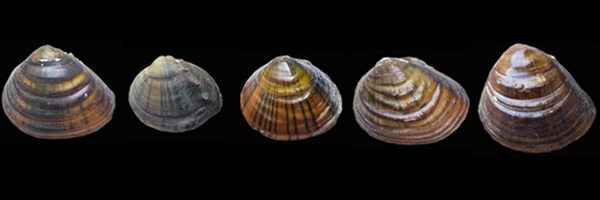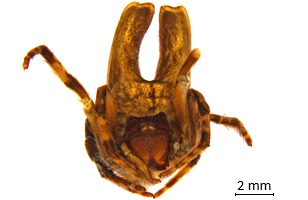We apply rigorous taxonomic and phylogenetic frameworks to shed light on both the taxonomy and evolution of amphidromous freshwater shrimps. Automatic species delineation methods based on molecular data revealed the existence of several species complexes within Macrobrachium. Results suggest habitat-driven speciation modes, where species differentiate in similar habitats distributed across the Indo-Pacific. The morphology of amphidromous Macrobrachium reflects numerous conserved adaptations to flow velocity. (Image credit: Valentin de Mazancourt.)
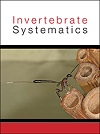
Invertebrate Systematics
Volume 39 Number 7 2025
Heterostigma is a poorly known genus of pyurid ascidian, deemed to inhabit the interstitial space between coarse sand grains. A new species, Heterostigma monniotae, is described, updating the taxonomy of the genus and clarifying its phylogenetic position through analyses of single loci and complete mitochondrial genome. In addition, observations on live specimens revealed an ontogenetic shift in mature specimens from a sessile to a motile phenotype. These new findings shed light on the evolutionary implications of this adaptive strategy. (Image credit: R. Virgili.)
The family Costellariidae is a charismatic, species-rich, yet poorly studied group of marine gastropod molluscs. Recent analyses of DNA sequences and shell features have failed to embrace the complexity of the group. Here, we analyse the morphology, DNA barcodes and genomic data from over 200 species, with emphasis on the South Pacific and Caribbean faunae, describing 9 new genera and 23 new species. Our results update the phylogeny and systematics of Costellariidae, corroborating patterns of species diversity in tropical seas. (Image credit: Alexander Fedosov.)
An integrative taxonomic approach, including morphological and molecular data, revealed three new cryptic species: Schistodesmus luqiaoensis, Schistodesmus tongpenensis, and Schistodesmus xinyuensis. Maternal mitochondrial genomes of the first two species and Schistodesmus lampreyanus were sequenced, and interspecific relationships elucidated based on mitochondrial phylogenomics. Molecular clock analysis and biogeographical reconstruction based on fossil-calibrated dating indicated that the ancestor of Schistodesmus originated in the paleo-Yangtze River Basin during the Eocene (c. 50.74 Ma) and began diversifying c. 18.68 Ma in the Neogene. (Photography by Kaiyu Hou.)
The molecular phylogeny of the gum nut orb-weaving spider genus Carepalxis was investigated, revealing a polyphyletic Carepalxis: its Australasian representatives were part of the informal clade ‘backobourkiines’, and the Neotropical species were related to the genus Ocrepeira. A revised Carepalxis, recognised by the presence of two cephalic humps in females and two enlarged tibial spines in males, is composed of seven endemic Australian species, including four new species described here, and C. beelzebub, which also occurs in New Guinea. (Photography by Pedro Castanheira.)
IS25009 Abstract | IS25009 Full Text | IS25009PDF (20.2 MB) | IS25009Supplementary Material (2.6 MB) Open Access Article
Pseudoscorpions show great promise for studying the evolution of genitalia because of their many unique sexually related features. We estimated a dated phylogeny based on morphology and genes for Withiidae to understand how quickly certain body parts changed. Sensory organs were found to change faster than genitalia, suggesting that environmental adaptation might exert stronger selective pressures than sexual selection in shaping their morphology. Our study also highlights the importance of considering both morphological features and genes when examining evolution. (Image credit: Catalina Romero-Ortiz.)




